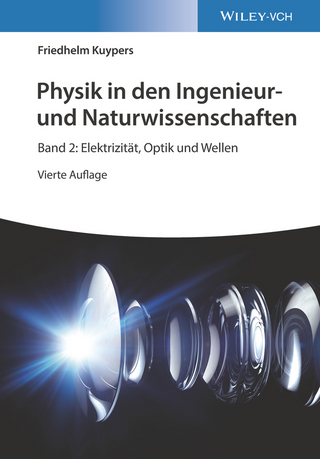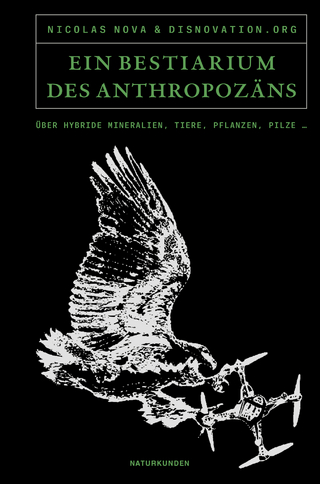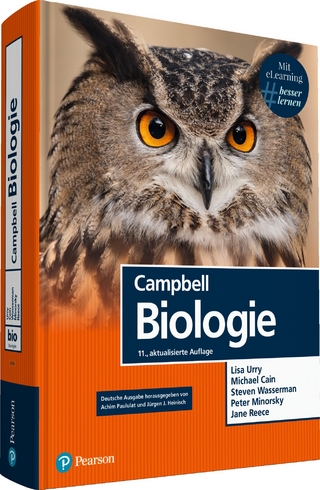
Conservation Physiology
Oxford University Press (Verlag)
978-0-19-884362-7 (ISBN)
Conservation physiology is a rapidly expanding, multidisciplinary field that utilizes physiological knowledge and tools to understand and solve conservation challenges. This novel text provides the first consolidated overview of its scope, purpose, and applications, with a focus on wildlife. It outlines the major avenues and advances by which conservation physiology is contributing to the monitoring, management, and restoration of wild animal populations. This book also defines opportunities for further growth in the field and identifies critical areas for future investigation. By using a series of global case studies, contributors illustrate how approaches from the conservation physiology toolbox can tackle a diverse range of conservation issues including the monitoring of environmental stress, predicting the impact of climate change, understanding disease dynamics, improving captive breeding, and reducing human-wildlife conflict. Moreover, by acting as practical road maps across a diversity of sub-disciplines, these case studies serve to increase the accessibility of this discipline to new researchers. The diversity of taxa, biological scales, and ecosystems highlighted illustrate the far-reaching nature of the discipline and allow readers to gain an appreciation for the purpose, value, applicability, and status of the field of conservation physiology.
Conservation Physiology is an accessible supplementary textbook suitable for graduate students, researchers, and practitioners in the fields of conservation science, eco-physiology, evolutionary and comparative physiology, natural resources management, ecosystem health, veterinary medicine, animal physiology, and ecology.
Christine L. Madliger is an integrative biologist and conservation physiologist working as an NSERC Postdoctoral Research Fellow at Carleton University, Ottawa, Canada. Craig E. Franklin is Professor of Zoology at The University of Queensland, Brisbane, Australia. Oliver P. Love is Associate Professor and Canada Research Chair at the Department of Integrative Biology, University of Windsor, Canada. Steven J. Cooke is a Canada Research Professor at Carleton University, Ottawa, Canada.
1:The history, goals, and application of conservation physiology Christine L. Madliger, Oliver P. Love, Steven J. Cooke, and Craig E. Franklin
2:Using physiology to infer the reproductive status and breeding performance of cryptic or at-risk bird species Glenn T. Crossin and Tony D. Williams
3:On conducting management-relevant mechanistic science for upriver migrating adult Pacific salmon Steven J. Cooke, Graham D. Raby, Nolan N. Bett, Amy K. Teffer, Nicholas J. Burnett, Kenneth M. Jeffries, Erica J. Eliason, Eduardo G. Martins, Kristina M. Miller, David A. Patterson, Vivian M. Nguyen, Nathan Young, Anthony P. Farrell, and Scott G. Hinch
4:Integrating physiological and ecological data to increase the effectiveness of bee protection and conservation Cedric Alaux, Jean-Luc Brunet, and Mickael Henry
5:Applying isotopic clocks to identify prior migration patterns and critical habitats in mobile marine predators Daniel J. Madigan, Oliver N. Shipley, and Nigel E. Hussey
6:Using physiological tools to unlock barriers to fish passage in freshwater ecosystems Rebecca L. Cramp, Essie M. Rodgers, Christopher Myrick, James Sakker, and Craig E. Franklin
7:Transcriptome profiling in conservation physiology and ecotoxicology: mechanistic insights into organism-environment interactions to both test and generate hypotheses Marisa L. Trego, Charles A. Brown, Benjamin Dubansky, Chelsea D. Hess, Fernando Galvez, and Andrew Whitehead
8:The role of conservation physiology in mitigating social-ecological traps in wildlife-provisioning tourism: A case study of feeding stingrays in the Cayman Islands Christina A. D. Semeniuk
9:Applying conservation physiology in response to a devastating wildlife disease, White-nose Syndrome in bats Yvonne A. Dzal and Craig K.R. Willis
10:Physiology provides a window into how the multi-stressor environment contributes to amphibian declines Michel Ohmer, Lesley Alton, and Rebecca Cramp
11:Improving "shark park" protections under threat from climate change using the conservation physiology toolbox Ian A. Bouyoucos and Jodie L. Rummer
12:A tale of two whales: putting physiological tools to work for North Atlantic and southern right whales Kathleen E. Hunt, Alejandro Fernández Ajó, Carley Lowe, Elizabeth A. Burgess, and C. Loren Buck
13:Weathering the impacts of climate change: methods for measuring the environment at scales relevant to conservation physiology Brian Helmuth
14:A veterinary perspective on the conservation physiology and rehabilitation of sea turtles Charles Innis and Kara Dodge
15:Applications of minimally invasive immune response and glucocorticoid biomarkers of physiological stress responses in rescued wild koalas (Phascolarctos cinereus) Edward J. Narayan and Renae Charalambous
16:How thermal ecophysiology assists the conservation of reptiles: Case studies from New Zealand's endemic fauna Alison Cree, Kelly M. Hare, Nicola J. Nelson, Christian Chukwuka, and Jo Virens
17:Using applied physiology to better manage and conserve the white rhinoceros (Ceratotherium simum) Anna J Haw, Andrea Fuller and Leith CR Meyer
18:Communication in conservation physiology: linking diverse stakeholders, promoting public engagement, and encouraging application Taryn D. Laubenstein and Jodie L. Rummer
19:Optimism and opportunities for conservation physiology in the Anthropocene: a synthesis and conclusions Steven J. Cooke, Christine L. Madliger, Jordanna N. Bergman, Vivian M. Nguyen, Sean J. Landsman, Oliver P. Love, Jodie L. Rummer, and Craig E. Franklin
| Erscheinungsdatum | 01.02.2021 |
|---|---|
| Zusatzinfo | 70 line figures and illustrations |
| Verlagsort | Oxford |
| Sprache | englisch |
| Maße | 189 x 17 mm |
| Gewicht | 1 g |
| Themenwelt | Naturwissenschaften ► Biologie ► Allgemeines / Lexika |
| Naturwissenschaften ► Biologie ► Ökologie / Naturschutz | |
| Naturwissenschaften ► Biologie ► Zoologie | |
| ISBN-10 | 0-19-884362-3 / 0198843623 |
| ISBN-13 | 978-0-19-884362-7 / 9780198843627 |
| Zustand | Neuware |
| Haben Sie eine Frage zum Produkt? |
aus dem Bereich


